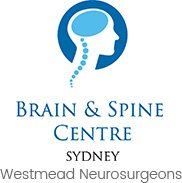Neck & Arm Pain
Neck Pain
The neck supports and assists in movement of the head. It is the most flexible part of the spine and consists of 7 cervical vertebrae, cervical segment of the spinal cord, spinal nerves, ligaments, tendons and muscles. Neck pain can be secondary to a problem affecting any of these structures.
Usually neck pain occurs due to damage to the soft tissue such as muscles, ligaments and nerves which may occur either due to an injury or wear and tear associated with the ageing process. The cervical spine is more prone to injury as it has comparatively less protection when compared to the thoracic and lumbar spine. Some of the common causes of neck pain include incorrect body posture, disease affecting the spine, trauma, inherited abnormalities of the cervical spine, infection or tumour of the spine. Spondylosis and cervical spinal stenosis may also result in neck pain.
Spondylosis is a result of degeneration of the intervertebral discs between the cervical vertebrae. This increased wear and tear of the vertebral joints causes damage to the cartilage and formation of bone spurs. The intervertebral disc may also protrude out of its normal anatomical space and cause spinal nerve compression.
Cervical spinal stenosis refers to the narrowing of the spinal canal in the neck. It occurs due to age related changes of the spine and its surrounding structures such as thickening of ligaments, degeneration of intervertebral discs and excessive bone formation around the intervertebral joints. A compression of cervical spinal nerves or the spinal cord, due to any of these factors, results in neck pain.
Symptoms
The intensity of neck pain may be vary from mild to intense and may be associated with difficulty in movement of the neck (neck stiffness). The affected region may be tender to touch. Neck pain may also be associated with numbness, tingling or weakness in the arm or hand. Neck pain may sometimes also lead to gait and balance disturbances, headache, dizziness, jaw pain and ringing in the ears. In rare cases neck pain may also be associated with loss of bowel and bladder function.
Diagnosis
Proper diagnosis is crucial for effective management of neck pain. To arrive at an accurate diagnosis, a detailed medical history coupled with a physical and neurological examination is essential. Neurological examination helps identify any signs of neurological injury and involves evaluation of reflexes and muscle weakness. An X-ray or CT scan of the neck may also be required to confirm the diagnosis.
Treatment
Non-surgical treatment
Non-surgical options for the management of neck pain include activity modification, pain medication, non-steroidal anti-inflammatory drugs, muscle relaxants, physical therapy and spinal injections. A neck collar may be recommended for few days to keep the neck still and reduce mechanical pain due to movement. Chiropractic may also be helpful in some cases.
Surgery
Surgery is rarely required for treating neck pain. Surgery is considered only if pain and symptoms fail to improve with non-surgical treatment and neurologic dysfunction and neck instability are evident at diagnosis.
Consult your doctor to clarify any doubts or unanswered questions about neck pain or to know more about the available treatment options.
Arm Pain
Hand Pain
Hand pain is characterised by distress in the joints and tissues of the hand or fingers. Hand pain can be depicted as pulsating, aching, increased warmth, prickling, irritation and inflexibility. The hand is composed of nerves, bones, blood vessels, muscles, tendons and skin. Each part has its specific function such as nerves transfer sensation, joints control movements, blood vessels maintain circulation, muscles provides motion, tendons anchor the muscles to the bones and skin receives sensations.
Injury or inflammation of any of these structures, due to a disorder or disease condition, may produce hand pain. Even compression of the nerves supplying these structures may cause hand pain.
Causes
The conditions and disorder that frequently play a role in hand pain are:
- Accidental injury and trauma
- Serious infections in the blood (Septicaemia)
- Fracture of the hand bones
- Nerve compression
- Incident of conditions such as tenosynovitis and carpal tunnel syndrome
- Strains in muscles and ligaments
- Osteoarthritis and rheumatoid arthritis
- Suffering from diabetes and peripheral neuropathy
- Tedious lifting, twisting or gripping
- Long-term use of keyboards
Treatment
Hand pain can be treated normally by resting the hand, medications, bracing, heat or ice application, compression, stretching and strengthening exercises, and by treating the underlying cause or condition. In cases of chronic hand pain unresponsive to conservative treatment measures, hand surgery may be recommended.




